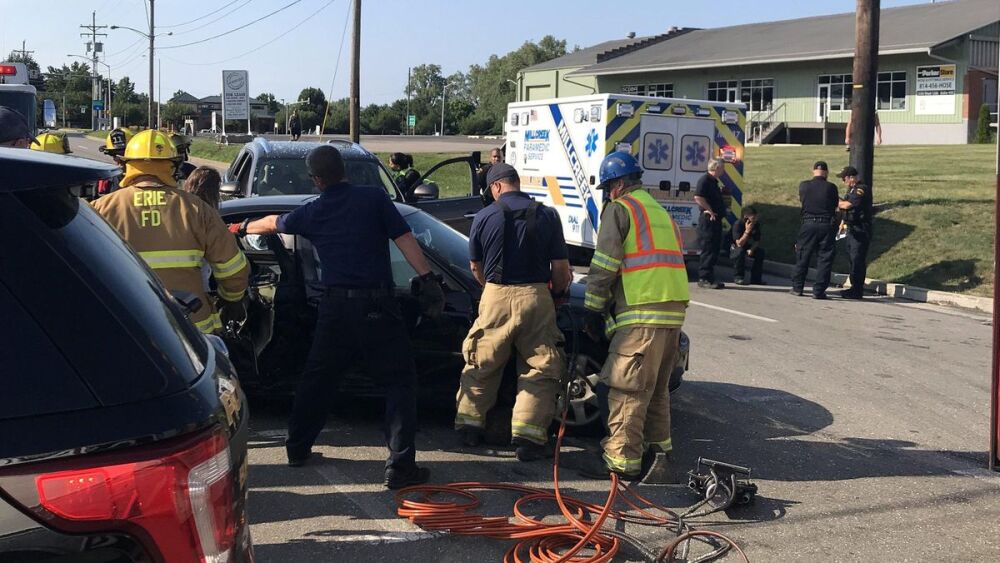“BSI ... scene safety” – we all remember that memorized, repeating phrase.
As EMS directors, chiefs, executives, supervisors and providers, it’s well past the time that we prioritize safety within our industry, within our ambulances, and within our scenes. To accomplish this, it doesn’t have to cost a fortune, either. In fact, there are many actions – 10 that we’ll discuss – that can be taken to immediately provide a safety-focused return on investment for your crews; and they’re entirely free!
1. Lift your cot with two people
The age of power-loading cots all but eliminates the need to lift your cot for agencies resourced with the devices, but that doesn’t mean that you should forget the manual basics of lifting if the electronics fail. When loading your cot into the back of your ambulance with a patient (securely) onboard, always utilize two people to lift. Don’t just try to lug it up on your own. Two people lifting is much safer on your back than only one.
2. Wear your seatbelt!
This is pretty self-explanatory in the front of the ambulance, but still needs to be spoken about in the back of the ambulance. Quite bluntly, unless your call consists of one of the small handful of the 5% or less of instances where being unbelted is warranted, then you absolutely should be seated and seat-belted in the patient compartment of the ambulance (period).
3. Wear your safety vest
You may not need to wear your vest as you exit your ambulance on a residential street, but any other time where you’re either walking around/through active traffic on a roadway, wearing your traffic safety vest should just be a given. It simply increases your visibility with zero added cost.
4. Wear safety glasses
They’re not just for COVID protection or airway management procedures. Safety glasses – or any form of glasses or eye protection – can be worn for all calls and provide an immediate form of safety protection from all splash or light debris hazards, immediately.
5. Turn away from the scene
Think back to your initial drivers’ education course and being taught how to park your vehicle on the side of the road. In many instances, you were taught to turn your wheels into the curb so that if your vehicle was struck, it would more than likely move into the curb rather than into traffic. This same premise can be followed when you park your ambulance on an active roadway scene. Turn your wheels into the curb or away from the scene (if there is not a nearby curb) to decrease the risk of your ambulance moving toward you if it is struck from behind.
6. Block the scene
Coinciding with how to park is where to park. Whenever possible, allow another emergency response vehicle to function as the primary scene blocker for your incident – such as a fire apparatus. If none are available, use your own ambulance to function as a primary scene blocking device in the event of a collision from a distracted driver.
7. Turn on your 4-way hazard flashers
Flashing red lights have their place on active roadways, but they don’t have much of a purpose underneath the foyer entrance of a nursing home, or even while parked on a residential street. Instead, don’t draw attention from (or distract) everyone with the use of your flashing red lights. Simply catch their approaching attention with your 4-way hazard flashers. This may lessen their roadway emergency distraction and heighten their roadway cautionary attention.
8. Light up your scene
There are scene lights on the side and rear of your ambulance for a reason, so, use them! Lighting up your roadway scene or walkway up to a residence can greatly improve your nighttime visibility (and safety). Just remember not to blind others on the roadway as you leave the scene (so, remember to turn off your scene lights as you depart).
9. Carry a flashlight
If your scene lights can’t provide the added visibility (and safety) that you need, a flashlight certainly can. Ideally, everyone should have access to their own 90-degree angled flashlight, but, if that’s not the case, utilizing the required onboard flashlight in your ambulance will certainly fulfill its intended purpose (which is to actually be used, not just checked off during your annual vehicle inspection).
10. Research, read and learn
This article is just the start! Look up key terms/phrases like “risk management,” “scene safety” and “traffic safety” and follow the links. There’s a lot to learn about safety within our industry and being willing to learn is half the battle.
Start with these resources:
- 6 low- or no-cost ways to improve safety
- Eye safety is important on every EMS response
- 6 important PPE items paramedics should be wearing, but aren’t
- How to reduce ambulance collision death and injury
- All-hazards EMS safety
- Surviving dangerous drivers
This article, originally published in September 2022, has been updated.













